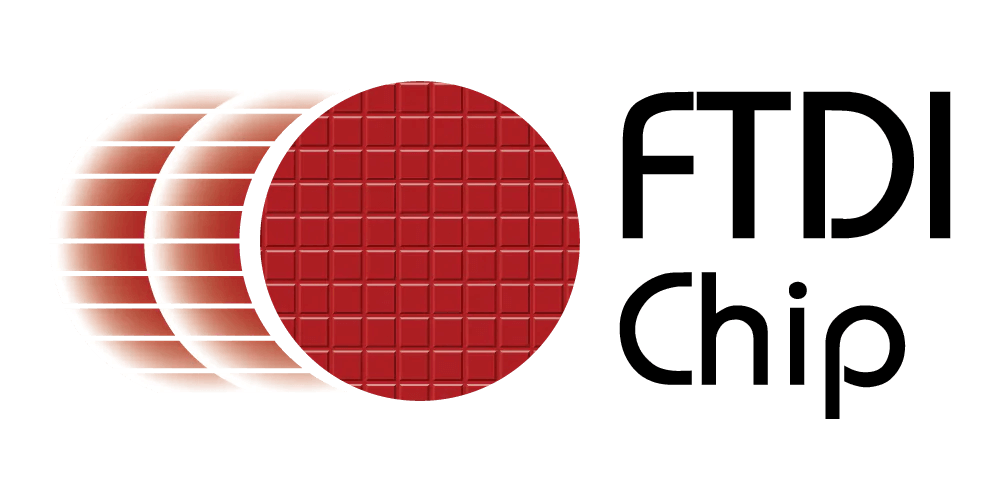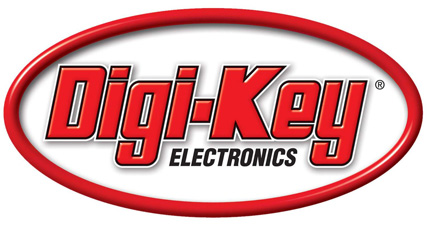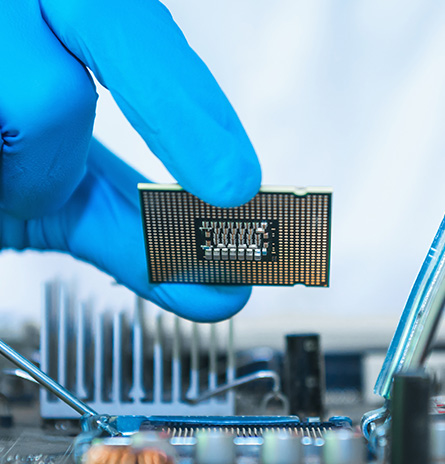Defibrillator
A defibrillator is a medical device used to deliver a dose of electric current (called a countershock) to the heart in cases of life-threatening cardiac arrhythmias, such as ventricular fibrillation or pulseless ventricular tachycardia. The primary purpose of a defibrillator is to restore a normal heartbeat by stopping the irregular heart rhythm.
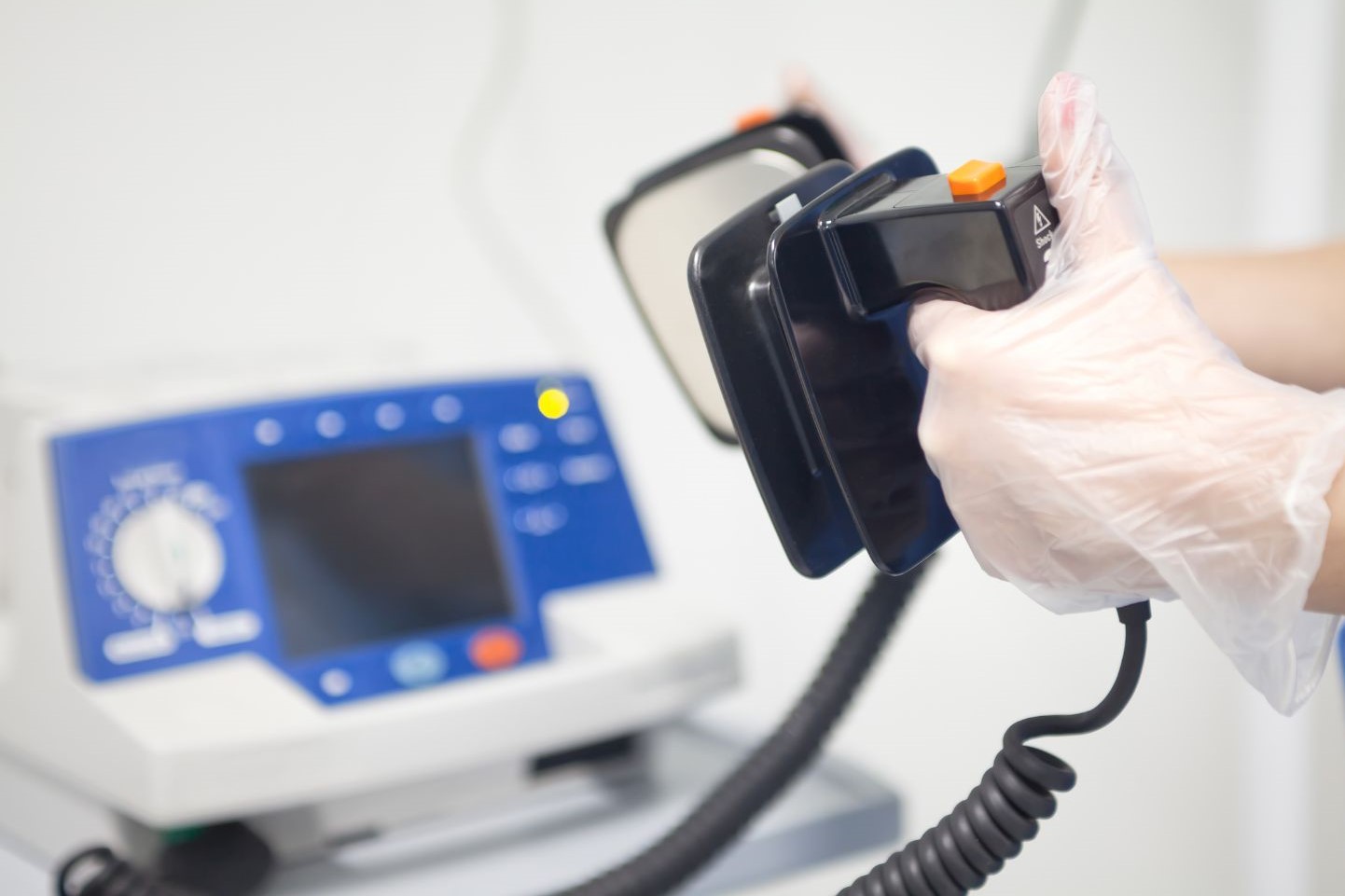
Using an FTDI USB Device with a Defibrillator
FTDI USB devices are used for serial communication over USB, providing a bridge between devices that communicate over serial protocols (such as RS-232 or UART) and modern computer systems or other devices with USB ports. In the context of a defibrillator, an FTDI USB device can be used for several purposes, including:
-
- Data Logging and Monitoring
During and after the use of a defibrillator, data such as the ECG (electrocardiogram) readings, shock delivered, and patient response can be logged for analysis and record-keeping. An FTDI USB device can transfer this data from the defibrillator to a computer system for storage and analysis.
-
- Firmware Updates
Defibrillators often require firmware updates to ensure they operate with the latest safety protocols and features. An FTDI USB device can facilitate the communication between the defibrillator and a computer to perform these updates.
-
- Remote Diagnostics and Maintenance
Technicians can use an FTDI USB device to connect to a defibrillator for diagnostics and maintenance tasks, allowing them to troubleshoot issues or verify the device’s operation remotely.
Example Application: Data Logging and Monitoring
A hospital uses defibrillators in their emergency response units. They want to log the performance data of each defibrillator during emergency use to ensure compliance with medical standards and for post-event analysis.
Key components include:
-
- Defibrillator
Equipped with a serial interface for data communication
-
- FTDI USB-to-Serial Adapter
To bridge the defibrillator’s serial interface with a USB port on a computer
-
- Computer System
Running data logging software to capture and store defibrillator data
-
- Data Logging Software
Custom or commercial software designed to read serial data and log it to a database or file system
FTDI products can be integrated into various applications to allow for:
-
- Port expansion
- USB charging
- USB connectivity to phone or PC
- Data download
- Synchronization to application software either on PC or system with USB Host
- Firmware updates
- Configuration and more!
FTDI IC’s have the following key features making it an ideal candidate for the application:
-
- USB Full / High / SuperSpeed connectivity depending on the application requirements
- Multiple data interfaces including UART, RS232, RS485, RS222, SPI, I2C, FIFO and GPIO
- Entire USB protocol handled on the chip. No USB specific firmware programming required.
- EEPROM for customization
- Data transfer rates (up to): UART (12Mbaud), SPI (52.8Mbps), I2C (6.66Mbit/s), FIFO (40MBps for USB2.0 and 400MB/s for USB3.0)
- Integrated receive and transmit buffers for high data throughput
- FTDI’s royalty-free drivers eliminate the requirement for USB driver development in most cases
- Battery Charger Detection which may be used by mobile devices to detect the presence of a charger on the USB port to enable higher current / faster charging of batteries
- Low operating current and USB suspend current
- Extended operating temperature range: -40°C to 85°C (Industrial), -40°C to +105°C (Automotive)
- Available in various compact Pb-free from as small as 12 Pin DFN package (RoHS compliant)!
The block diagram below shows at a high level how FTDI’s IC can be integrated into the application.
The USB port of the application can be connected to a phone, PC, tablet or embedded processor. The application software controls the FTDI IC which may be connected to a processor inside the application and communicates via one of the supported protocols (UART, RS232, RS485, RS222, SPI, I2C, FIFO and GPIO). This could allow for configuration, data download, firmware updates etc.
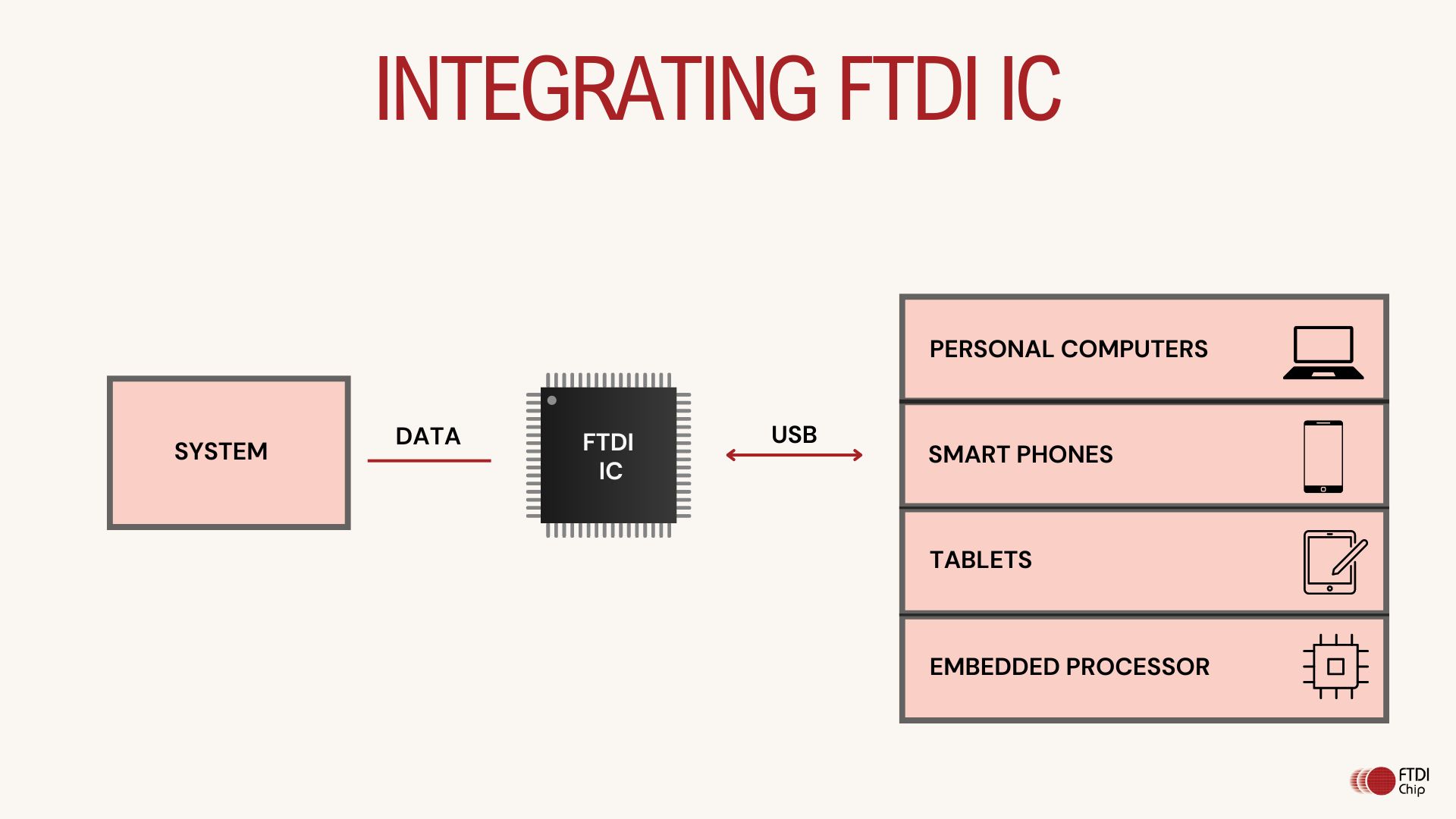
Another typical use case to integrate FTDI ICs into the application is to host the FTDI ICs with an MCU or embedded system which has a USB Host Controller allowing for port expansion and other various communications paths:
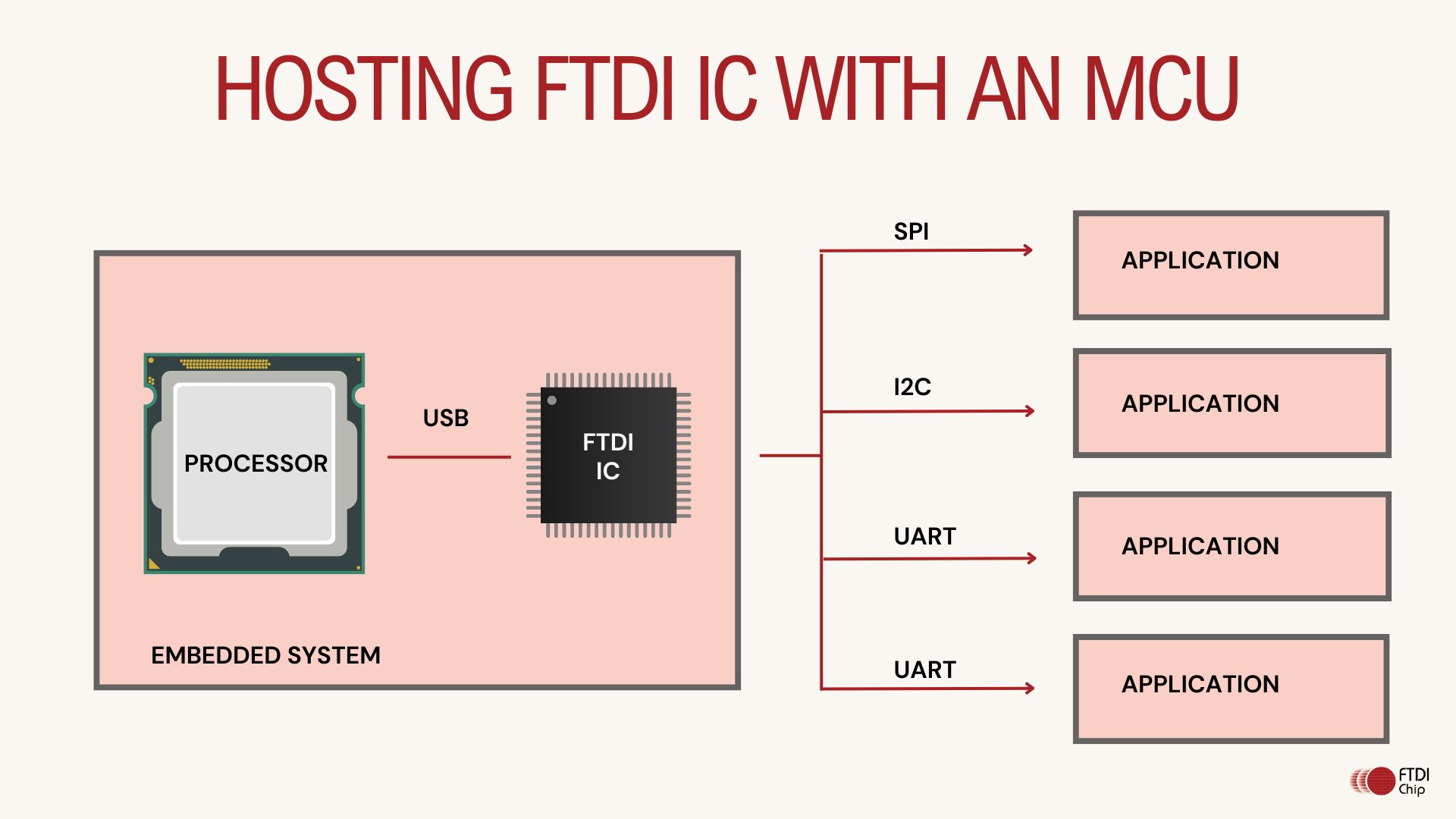
Recommended ICs:
